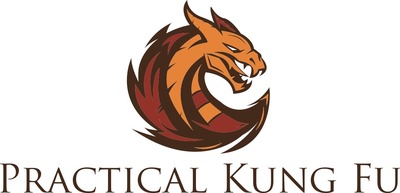 A few years back, I stumbled upon a video on Youtube demonstrating a technique to escape from a wrist grab.
A few years back, I stumbled upon a video on Youtube demonstrating a technique to escape from a wrist grab.
The teacher in the video is obviously quite knowledgeable in his art, and if I had desire to learn his art, I believe he’d be a good teacher.
The video is quite long and there is plenty of discussion regarding the technique.
Well into the video, after a nearly 15 minute discussion and demonstration, it is finally the opportunity for the student to apply her new found knowledge.
The teacher grabs her wrist, and she fails to break the grip… FAIL.
Why? She forgot the most important part of the technique.
Now, just imagine being in a situation where there is REAL danger.
An assailant grabs your wrist, and perhaps has a weapon in the other hand, or an accomplice nearby.
You get a massive adrenaline dump, knowing you are in danger.
You suddenly get tunnel vision, and you lose the ability to think due to the massive dump of adrenaline into your system.
Your arms start shaking and your legs feel wobbly.
Do you honestly think you are going to remember the details of a technique you only practiced on a handful of occasions?
This particular technique was complex enough that, even after a nearly 15 minute discussion, the student failed on her first attempt to execute it.
The only pressure she had was in trying to impress her teacher.
That is the issue with many martial arts, and kung fu in particular.
Many kung fu students feel that the gold is found in learning as many forms as possible. They champ at the bit to learn a new form once they’ve completed learning their current form.
There is rarely any real mastery. The most senior students I trained with had over 80 forms under their belts.
It’s simply not possible to become proficient at thousands of techniques.
Bruce Lee understood this in his development of Jeet Kune Do. He took the best stuff he learned in each art he studied, and discarded the rest.
Our most elite special operatives in the armed forces are not taught thousands of techniques, or even hundreds.
Combatives instructors understand that in real life, dangerous situations, principles win out over techniques.
Therefore, they focus on development of only a few basic skills, and learn to apply them with a handful of principles that have broad application.
Hit first is one of these key principles. About 85% to 90% of all street fights are won by the person who hits first.
That’s not to say you can just start teeing off on anyone who you argue with. We’ll get into the semantics of this principle down the road.
Another principle is “never go to the ground.”
Brazilian Jiu Jitsu training is noted for its emphasis on grappling and getting the opponent to submit due to a chokehold, arm bar, leg lock, etc.
The issue is that in a street fight, going to the ground is not so comfortable… pavement is much harder than the training floor or mat in a school setting. There may also be gravel, glass, curbs, or sharp objects present on the ground as well.
Lastly, many street fight situations involve multiple people.
The last place you want to be is on the ground grappling… your assailant’s buddy may be nearby with a knife.
With all this said, this does not mean you should ignore traditional martial arts training.
That training serves an important purpose.
Traditional martial arts training, when done regularly, provides you with:
- Improved skills
- Discipline
- Focus
- Knowledge
- Improved health and fitness
Therefore, it is important to understand the benefits of training in traditional martial arts, while understanding the limitations of that training.
Discover more from Practical Kung Fu
Subscribe to get the latest posts sent to your email.
